|
|
Search Resources (52 Results)
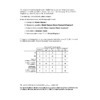 |
|
Lecture Notes | Approved: 5 years ago | 69.15 kB | Comments: 0
...types of histone-like proteins. The analysis of...
...how many total proteins are needed to...
...of eight histone proteins—two molecules each of...
...chromosome contains 3 proteins. ...
| 1
|
272
|
a123k456b789
|
 |
|
Lecture Notes | Approved: 6 years ago | 124.53 kB | Comments: 0
...fibers made of proteins, scattered through a...
...cells that secrete proteins to make fibers,...
...of actin. The proteins tropomyosin and troponin...
...out than in. Proteins in the plasma...
...charge. Negatively charged proteins and organic phosphates...
...to sodium channel proteins and increase the...
...neuron. Receptors are proteins that control chemically...
...92% water, 7% proteins and the rest...
...interstitial fluid. When proteins involved in blood...
...called serum. Plasma proteins: 1. Globulins are...
...certain hormones and proteins involved in their...
...of the plasma proteins. 2. Albumins help...
...60% of plasma proteins. 3. Fibrinogen and...
...clotting reaction. Plasma proteins act as buffers...
...of the blood proteins: all of albumin...
...detoxification of foreign proteins and parasitic infestations....
...and prothrombin are proteins found in the...
...receptor activates G proteins Activated G proteins...
...proteins Activated G proteins bind to K+...
...receptors activate G proteins. Activated G proteins...
...proteins. Activated G proteins in turn activate...
...some plasma and proteins filters out into...
...of the blood proteins pass into the...
...interstitial fluid and proteins in it to...
...Cells have surface proteins different from those...
...include DNA, RNA, proteins, and some carbohydrates....
...Cytokines are regulatory proteins (interferons and interleukins)...
...functions. Interferons are proteins produced by virus...
...cell activation. Complement proteins (complement system) increase...
...phagocytosis; some complement proteins digest part of...
...More than 20 proteins found in the...
...is regulated by proteins in the plasma,...
...cell, fluid and proteins leaked out of...
...develop specific surface proteins with receptor sites....
...as its own proteins on its surface:...
...by developing surface proteins with receptor sites....
...of cell surface proteins known as MHC...
...individual. Glycoproteins are proteins with a sugar...
...that code for proteins. Class I. Found...
...Class III. These proteins are part of...
...Antibodies are globular proteins also known as...
...allows complement system proteins to penetrate the...
...antibodies and complement proteins tend to adhere...
...class I MHC proteins on its surface....
...surface. Some viral proteins are broken down...
...class I MHC proteins to the surface...
...nodes and release proteins (lymphotoxins, perforins) in...
...usually form abnormal proteins on their surface...
...form different surface proteins they will not...
...are copper containing proteins found in arthropods...
...heme group. Copper-containing proteins. Dissolved in the...
...internal bonds of proteins and polypeptides resulting...
...enters cellular respiration. Proteins Proteins serve as...
...cellular respiration. Proteins Proteins serve as enzymes,...
...and converted to proteins. Excess amino acids...
...balance, components of proteins, cytochromes, hormones and...
...holds back large proteins and RBCs. Glucose,...
...plasma membrane. Specific proteins in the nucleus...
...receptors are transmembrane proteins with a hormone-binding...
...protein. These activated proteins then trigger a...
...G protein. G proteins then activate the...
...to phosphorylate certain proteins. Calcium is a...
...vitelline membrane. Species-specific proteins called bindin, located...
...the vitelline membrane. Proteins linking the two...
...amoeboid movement. Surface proteins allow cells to...
...a mixture of proteins, phospholipds and fats....
| N/A |
247
|
johaneswijaya
|
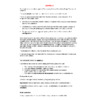 |
|
Lecture Notes | Approved: 6 years ago | 101.77 kB | Comments: 0
...fibers made of proteins, scattered through a...
...have many embedded proteins that control the...
...Cotransporters are membrane proteins that transport more...
...called chitin, and proteins. Insects have a...
...holds back large proteins and RBCs. Glucose,...
...tubule through membrane proteins called aquaporins. Osmotic...
...essential nutrients (RDA). Proteins. There are 20...
...required to manufacture proteins. Humans can synthesize...
...balance, components of proteins, cytochromes, hormones and...
...Pepsin breaks down proteins. Parietal cells contain...
...internal bonds of proteins and polypeptides resulting...
...92% water, 7% proteins and the rest...
...interstitial fluid. When proteins involved in blood...
...called serum. Plasma proteins: 1. Globulins are...
...certain hormones and proteins involved in their...
...of the plasma proteins. 2. Albumins help...
...60% of plasma proteins. 3. Fibrinogen and...
...clotting reaction. Plasma proteins act as buffers...
...of the blood proteins: all of albumin...
...some plasma and proteins filters out into...
...of the blood proteins pass into the...
...interstitial fluid and proteins in it to...
...out than in. Proteins in the plasma...
...charge. Negatively charged proteins and organic phosphates...
...neuron. Receptors are proteins that control chemically...
...of actin. The proteins tropomyosin and troponin...
...Cells have surface proteins different from those...
...include DNA, RNA, proteins, and some carbohydrates....
...Cytokines are regulatory proteins (interferons and interleukins)...
...functions. Interferons are proteins produced by virus...
...is regulated by proteins in the plasma,...
...cell, fluid and proteins leaked out of...
...develop specific surface proteins with receptor sites....
...presentation by MHC proteins: activating T cells....
...complexes stimulate complement proteins that punch holes...
| N/A |
241
|
johaneswijaya
|
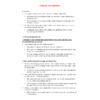 |
|
Lecture Notes | Approved: 6 years ago | 39.7 kB | Comments: 0
...fuel molecules— carbohydrates, proteins, and fats—in cellular...
...down its own proteins for fuel, muscles...
...the digestion of proteins), animals can fabricate...
...molecules - carbohydrates, proteins, and lipids. Besides...
...acids to make proteins. Most animals can...
...mental development. The proteins in animals products,...
...proportion. Most plant proteins are “incomplete,” being...
...use their muscle proteins as a source...
...to make new proteins during molting. While...
...use macromolecules like proteins, fats, and carbohydrates...
...all assemble their proteins from the same...
...and fatty acids. Proteins are broken down...
...the hydrolysis of proteins. Pepsin, which works...
...absorption. Digestion of proteins in the small...
...that mounted on proteins. A team of...
...coated with special proteins to form small...
| N/A |
149
|
johaneswijaya
|
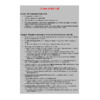 |
|
Lecture Notes | Approved: 6 years ago | 49.32 kB | Comments: 0
...complexes that make proteins based on instructions...
...lipids and diverse proteins are embedded in...
...of lipids and proteins for its specific...
...DNA and associated proteins are organized into...
...associated with many proteins. This complex of...
...and assembled with proteins from the cytoplasm...
...large quantities of proteins (such as pancreas...
...cytosol and synthesize proteins that function within...
...Bound ribosomes synthesize proteins that are inserted...
...include synthesis of proteins and their transport...
...carried out by proteins in a given...
...cells that secrete proteins. As a polypeptide...
...polypeptides are glycoproteins, proteins to which a...
...ER membrane. Secretory proteins are packaged in...
...Transport vesicles carry proteins from one part...
...the cell. Membrane-bound proteins are synthesized directly...
...first added to proteins in rough ER,...
...the Golgi apparatus. Proteins on the inner...
...vacuole include stockpiling proteins or inorganic ions,...
...of the organelle’s proteins, which are made...
...the matrix. Other proteins that function in...
...grow by incorporating proteins made in the...
...interacts with motor proteins to produce motility....
...elements and motor proteins work together with...
...the cell. Motor proteins bring about movements...
...on cell surface proteins into the cell—and...
...certain plasma membrane proteins attached to the...
...to guide motor proteins carrying organelles to...
...a cell. Membrane proteins on this primary...
...centriole. Flexible cross-linking proteins connect outer doublets...
...large protruding motor proteins called dyneins spaced...
...by the cross-linking proteins just inside the...
...a family of proteins that includes the...
...a matrix of proteins and other polysaccharides....
...integrins, cell-surface receptor proteins that span the...
...cytoplasmic side to proteins attached to microfilaments...
...the set of proteins being made by...
...In certain circumstances, proteins and RNA can...
...cells. Special membrane proteins surround these pores....
| N/A |
176
|
johaneswijaya
|
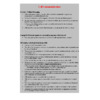 |
|
Lecture Notes | Approved: 6 years ago | 44.36 kB | Comments: 0
...bind to receptor proteins on the other...
...are plasma membrane proteins, whose ligands are...
...are plasma membrane proteins. Water-soluble signaling molecules...
...sites on receptor proteins that span the...
...depend on these proteins. Similarities among G...
...Similarities among G proteins and G-protein-linked receptors...
...fully activated receptor proteins activate a variety...
...of specific relay proteins that bind to...
...more different intracellular proteins simultaneously. These activated...
...These activated relay proteins trigger many different...
...30% of human proteins, they make up...
...1% of all proteins whose structures have...
...other cell signaling proteins is development of...
...treatments. Some receptor proteins are intracellular. Intracellular...
...protein. The activated proteins enter the nucleus...
...genes? These activated proteins act as transcription...
...Many intracellular receptor proteins are structurally similar,...
...response are often proteins. The interaction of...
...The interaction of proteins is a major...
...The phosphorylation of proteins by a specific...
...on other substrate proteins, unlike tyrosine kinases,...
...thousands of the proteins in a cell....
...phosphate groups from proteins, a process called...
...variety of relay proteins are sensitive to...
...G-protein-linked receptors, G proteins, and protein kinases...
...phosphorylates various other proteins, depending on cell...
...or more. Various proteins actively transport Ca2+...
...the activity of proteins rather than their...
...synthesis, directly affecting proteins that function outside...
...presence of scaffolding proteins. A crucial point...
...different collections of proteins. This is because...
...collection of receptor proteins, relay proteins, and...
...receptor proteins, relay proteins, and proteins needed...
...relay proteins, and proteins needed to carry...
...more of the proteins that handle and...
...differences in other proteins lead to different...
...use differing receptor proteins for the same...
...activate multiple relay proteins) or second messengers...
...can regulate numerous proteins). Two pathways triggered...
...Using the same proteins in more than...
...number of different proteins it must make....
...must make. Scaffolding proteins and signaling complexes...
...molecules such as proteins, many signal pathways...
...physically by scaffolding proteins. Scaffolding proteins may...
...scaffolding proteins. Scaffolding proteins may themselves be...
...be large relay proteins to which several...
...several other relay proteins attach. For example,...
...cascade. Some scaffolding proteins in brain cells...
...networks of signaling-pathway proteins at synapses. This...
...In fact, some proteins participate in more...
...importance of relay proteins that serve as...
...underscored when these proteins are defective or...
...kinases and other proteins; and so forth....
...cascade of “suicide” proteins in the cells...
...and ced-4, encode proteins essential for apoptosis....
...essential for apoptosis. Proteins involved in apoptosis...
...cut up the proteins and DNA of...
...involves certain mitochondrial proteins that form molecular...
...leak and release proteins that promote apoptosis....
...in mammals uses proteins homologous to the...
...to the nematode proteins Ced-3, Ced-4, and...
...of as relay proteins capable of transducing...
...apoptotic program, relay proteins may integrate signals...
| N/A |
149
|
johaneswijaya
|
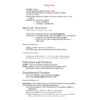 |
|
Lecture Notes | Approved: 6 years ago | 68.91 kB | Comments: 0
...reaction Enzymes are proteins Specific to the...
...product Enzymes and Proteins Enzymes are relatively...
...molecules made of proteins Enzymes are globular...
...Enzymes are globular proteins (see previous notes)...
...process by which proteins lose their 3D...
...which changes stored proteins into soluble substances....
...break down the proteins in stains into...
| N/A |
144
|
johaneswijaya
|
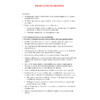 |
|
Lecture Notes | Approved: 6 years ago | 37.78 kB | Comments: 0
...the synthesis of proteins. Proteins are the...
...synthesis of proteins. Proteins are the links...
...Between Genes and Proteins 1. The study...
...that genes specify proteins In 1909, Archibald...
...that not all proteins are enzymes and...
...demonstrated that many proteins are composed of...
...for making specific proteins. The bridge between...
...synthesize certain human proteins after insertion of...
...region. In eukaryotes, proteins called transcription factors...
...a variety of proteins and several small...
...snRNPs and other proteins to form a...
...own excision without proteins or extra RNA...
...biological catalysts are proteins.” RNA splicing appears...
...evolution of new proteins. Proteins often have...
...of new proteins. Proteins often have a...
...lead to new proteins through novel combinations...
...are composed of proteins and ribosomal RNA...
...the rRNA and proteins form the subunits...
...tertiary structure. Chaperone proteins may aid correct...
...folding. In addition, proteins may require posttranslational...
...cytosol and synthesize proteins that reside in...
...reticulum. They synthesize proteins of the endomembrane...
...as well as proteins secreted from the...
...signal polypeptide. Secretory proteins are released entirely...
...space, but membrane proteins remain partially embedded...
...mechanisms for targeting proteins to the appropriate...
| N/A |
227
|
johaneswijaya
|
 |
|
Lecture Notes | Approved: 6 years ago | 214.01 kB | Comments: 0
...needed to build proteins, in the liver....
...particles such as proteins and blood cells...
...molecules such as proteins or blood cells....
| N/A |
123
|
johaneswijaya
|
 |
|
Lecture Notes | Approved: 6 years ago | 53.85 kB | Comments: 0
...macromolecules: carbohydrates, lipids, proteins, and nucleic acids....
...classes of macromolecules—carbohydrates, proteins, and nucleic acids—form...
...levels. Concept 5.4 Proteins include a diversity...
...range of functions Proteins account for more...
...thousands of different proteins, each with a...
...structure and function. Proteins are the most...
...three-dimensional shape. All proteins are unbranched polymers...
...monomers from which proteins are constructed. Amino...
...amino acids. Many proteins are globular, while...
...to specific receptor proteins on the surface...
...clogging capillaries. Most proteins have segments of...
...transthyretin. Some fibrous proteins, such as -keratin,...
...in many globular proteins, such as transthyretin,...
...dominate some fibrous proteins, including the silk...
...biologically inactive. Most proteins become denatured if...
...can be fatal. Proteins in the blood...
...but not all, proteins can return to...
...about 24 million proteins and the three-dimensional...
...structure alone. Most proteins appear to undergo...
...folding of many proteins is assisted by...
...chaperonins, or chaperone proteins. Chaperonins do not...
...marking incorrectly folded proteins for refolding or...
...instructions for building proteins from the nucleus...
...acid sequence of proteins. The first chemical...
...use DNA and proteins as tape measures...
...and their products (proteins) document the hereditary...
| N/A |
156
|
johaneswijaya
|
|
Post your homework questions and get free online help from our incredible volunteers
|